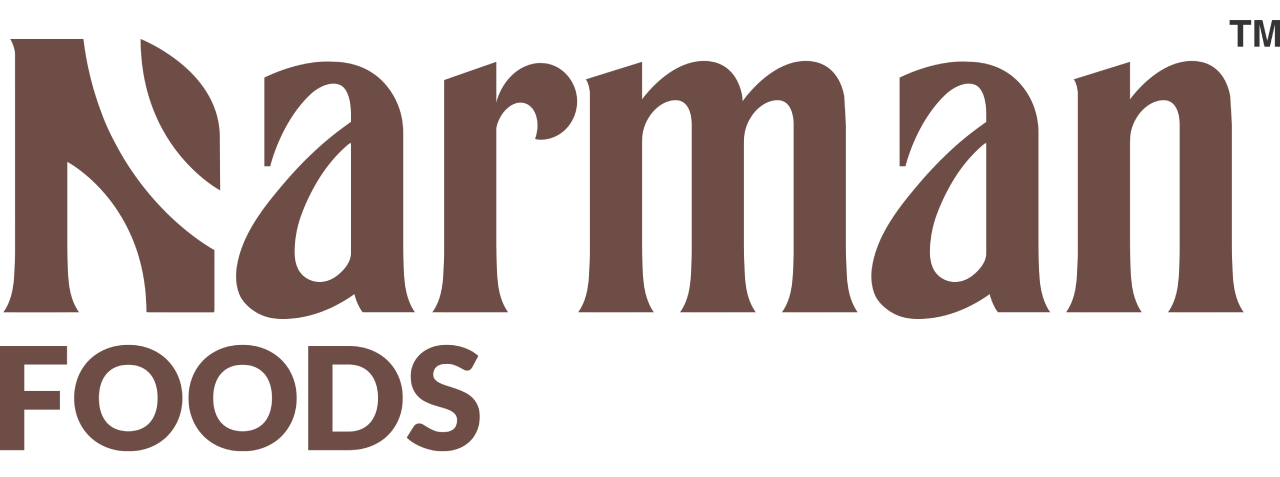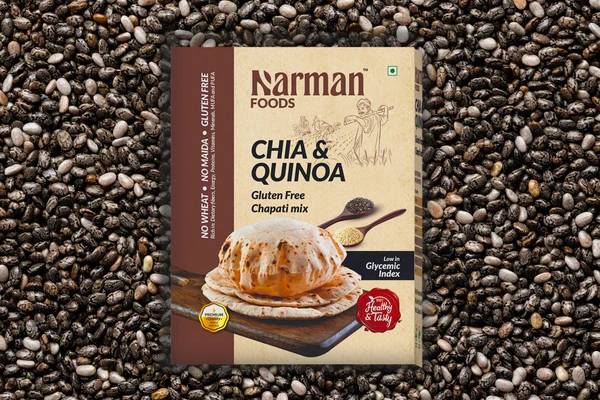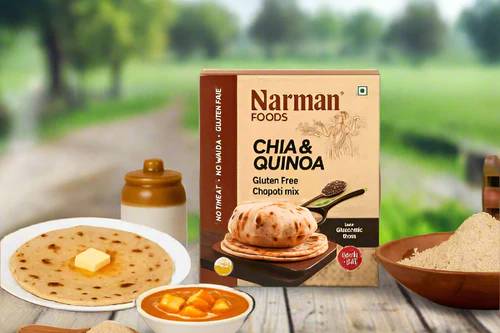In today’s world, more people are choosing to avoid maida, wheat, and gluten—not just as a trend, but as a meaningful shift for better health. At Narman Foods, we’re committed to this principle: ensuring our offerings are No Maida, No Wheat, 100% Gluten Free. Here’s everything you need to know about what that means, why it matters, and how to make smart choices.
What Does “No Maida, No Wheat, 100% Gluten Free” Mean?
-
No Maida: Refined wheat flour (maida) is stripped of most fibre and many nutrients. Avoiding maida means avoiding overly processed wheat, which can lead to rapid spikes in blood sugar and may contribute to inflammation.
-
No Wheat: Wheat in all forms is eliminated—this means no wheat flours, wheat derivatives, or hidden wheat in ingredients.
-
100% Gluten Free: Beyond wheat, products are free from gluten-containing grains like barley, rye, and related derivatives or traces. Also means manufacturing processes keep cross-contamination from occurring.
Who Benefits Most from This Diet
-
Individuals with celiac disease — where eating gluten causes serious damage to the small intestine and long-term health issues.
-
Those with non-celiac gluten or wheat sensitivity — people who don’t have celiac disease but experience symptoms like bloating, digestive discomfort, fatigue or skin issues after consuming gluten or wheat.
-
People managing wheat allergy — for whom avoiding wheat is essential to avoid allergic reactions.
-
Anyone wanting a healthier lifestyle, particularly with better digestion, stable energy, and more mindful eating.
Key Health Benefits
-
Improved Gut Health & Digestion
Without maida and wheat, many people report less bloating, fewer digestive issues, and more regular bowel movements. -
Reduced Inflammation
Wheat and certain wheat proteins may trigger immune responses in sensitive individuals. Removing gluten and wheat can reduce inflammation in the gut and beyond. -
Better Nutrient Absorption
In those who have intestinal damage or sensitivity, going fully gluten free allows healing, which improves absorption of vitamins, minerals and overall well-being. -
More Stable Energy Levels
Foods made with refined wheat often cause quick changes in blood sugar. Gluten-free alternatives using whole grains or naturally gluten-free flours tend to support steadier energy throughout the day.
Challenges & What to Watch Out For
-
Risk of Nutritional Gaps
Gluten-free foods, especially processed ones, may be lower in fibre, certain B vitamins, minerals like iron and folate. It’s important to choose alternatives that compensate for those losses. -
Higher Cost
Specialty flours and gluten-free production methods often cost more. Be aware that gluten-free products may carry a premium. -
Possible High Sugar / Fat Content
Some gluten-free snacks or products try to mimic texture/flavour and do so by adding extra sugar, fats, or additives. These may reduce some of the health benefits. -
Texture & Taste Differences
Baking and cooking with gluten-free or non-wheat flours is different. Sometimes the result does not have the same chew, rise, or elasticity. It’s about finding good recipes and quality ingredients.
What Science Is Saying (Latest Insights)
-
Many gluten-free products are found to have higher sugar and calorie content, with lower protein and fibre compared to their wheat-based counterparts. This means going gluten free must be done intelligently, not just by substitution.
-
There is still limited evidence that going gluten free improves health for those who do not have gluten-related health conditions. Avoiding unnecessary restriction is equally important.
-
New studies emphasize balancing the diet: using alternative grains, pseudo-grains, legumes, and naturally gluten free foods to make up nutrient shortfalls is key.
-
Advances in gluten-free food formulation (using flours like quinoa, amaranth, buckwheat) are helping to bring products that taste better and are more nutritious.
How Narman Foods Ensures True “No Maida, No Wheat, 100% Gluten Free”
-
We source ingredients that are inherently gluten-free or tested to be free of wheat and other gluten containing grains.
-
Our processing is designed to eliminate cross-contamination risks. Dedicated equipment or strict cleaning protocols are used.
-
We avoid maida entirely; our recipes use whole flours, millets, ragi, sorghum, and other nutritious alternatives.
-
We ensure transparency: ingredients lists are clear, allergen information is visible, and dietary labels are accurate.
-
We constantly test for nutritional balance and strive to include fibre, protein, vitamins & minerals so that our gluten-free products are not just “safe” but “smart”.
Tips for Choosing & Using Gluten-Free Foods
-
Always check the label: verify that “gluten-free” is clearly stated and see if the product is tested or certified.
-
Look for ingredients like quinoa, millet, buckwheat, ragi, sorghum, legumes — these help maintain nutrition.
-
Be cautious with products that look like “wheat replacements” (bread, cake, snacks) because texture can be enhanced using sugar/fats—balance is important.
-
If you bake at home, experiment with mixes or flours designed for gluten-free baking—they often include the right binding agents and structure.
-
Keep nutrient diversity: include fresh vegetables, fruits, legumes, nuts to make up what may be missing from wheat substitutes.
Conclusion
Choosing No Maida, No Wheat, 100% Gluten Free is a powerful step toward better health—especially for those who need it medically. At Narman Foods, our goal is to make that choice easy, delicious, and trustworthy. Because going gluten free shouldn’t mean giving up quality or flavour—it should mean gaining health, confidence, and peace of mind.




Leave a comment
This site is protected by hCaptcha and the hCaptcha Privacy Policy and Terms of Service apply.